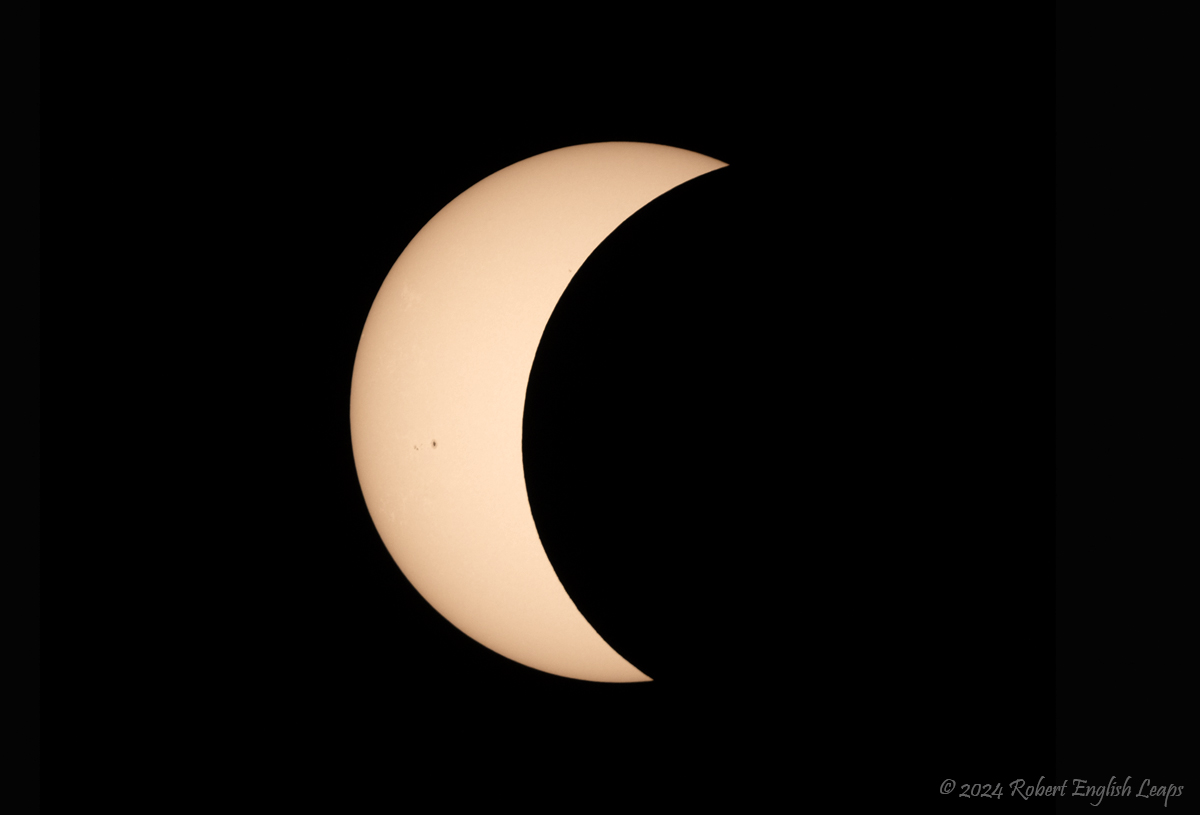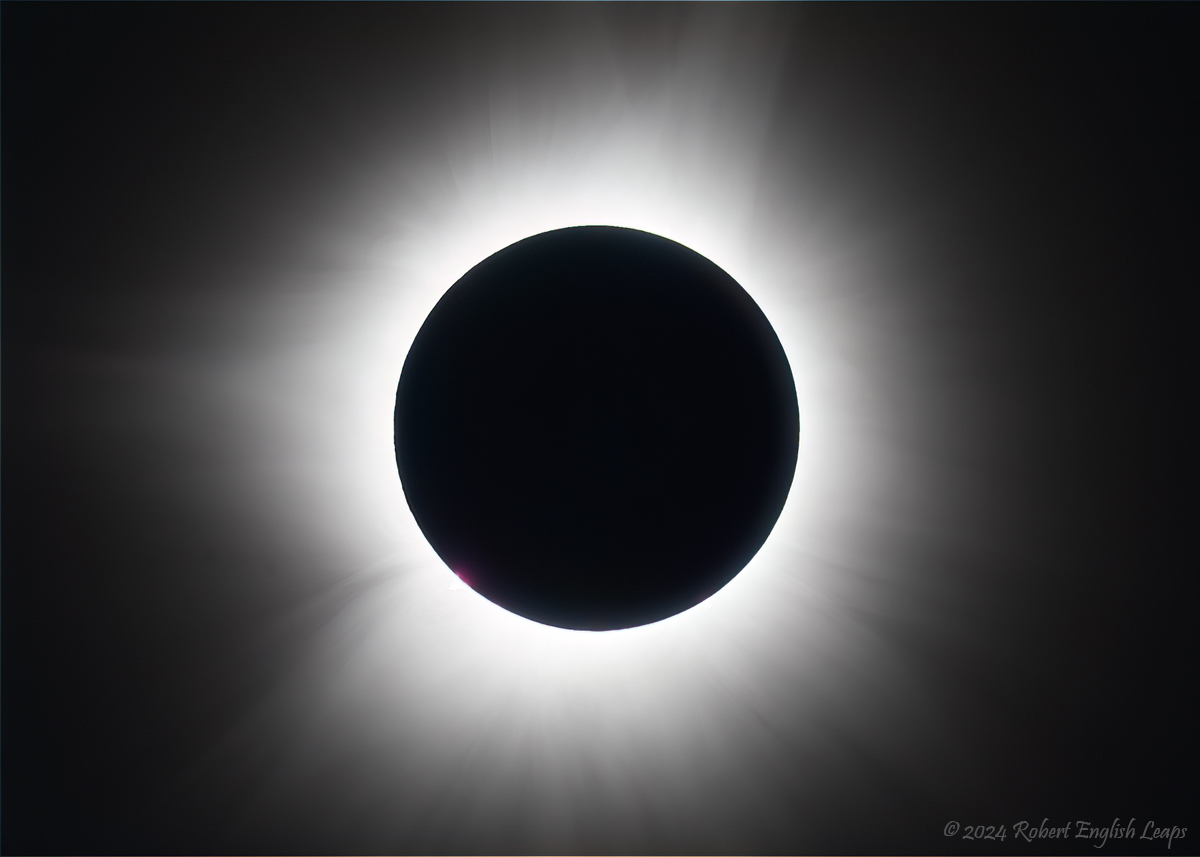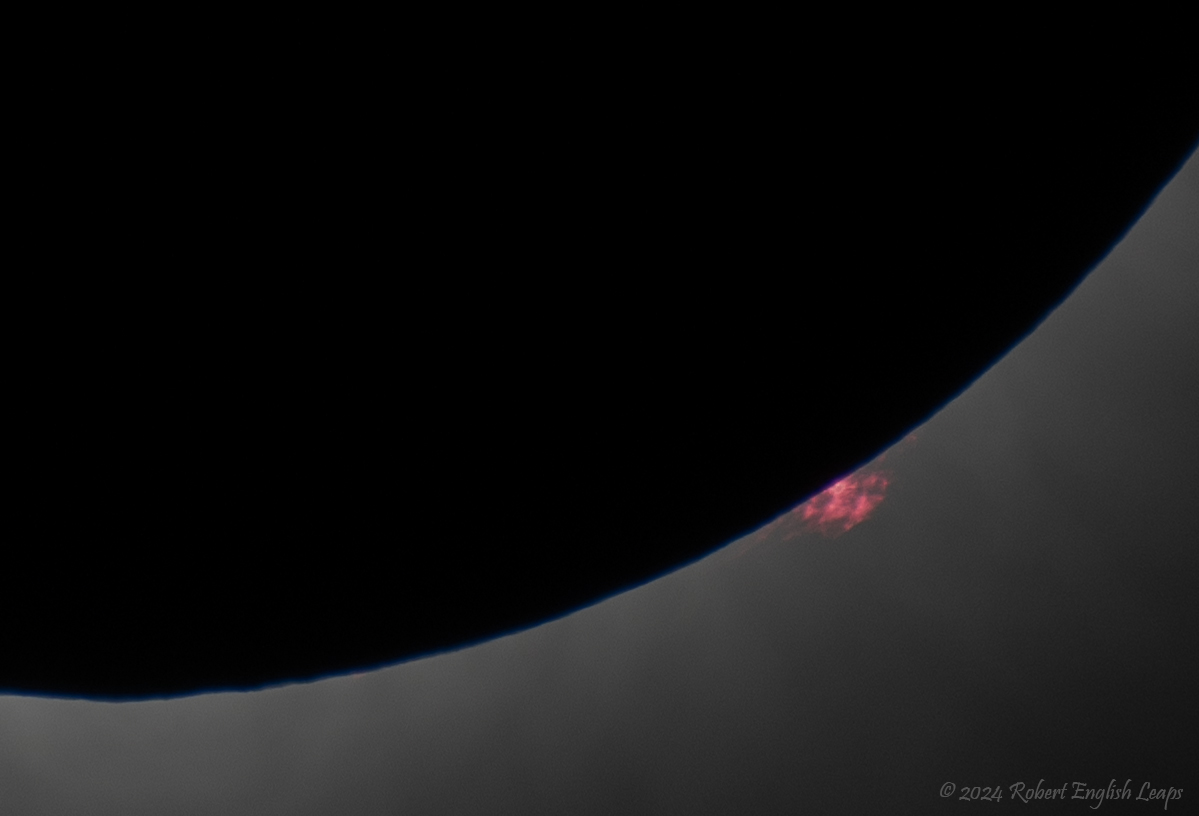The purpose of this feature is to give scout leaders, educators and naturalists an idea of some of the natural events coming up each month. We will try to cover a variety of natural events ranging from sky events to calling periods of amphibians, bird and mammal watching tips, prominent wildflowers and anything else that comes to mind. We will also note prominent constellations appearing over the eastern horizon at mid-evening each month for our area for those who would like to learn the constellations. If you have suggestions for other types of natural information you would like to see added to this calendar, let us know! Though we link book references to nationwide sources, we encourage you to support your local book store whenever possible.
Notes From April 2024
It was a pretty day when we started out but as we drove through Kentucky we ran under a shelf of dark clouds. Then, after we crossed the Ohio River into Illinois, the weather looked even more threatening, with thick fog slowing us to a crawl. We were headed to the small town of Vienna, Illinois. Checking the weather again, we found the fog was forecast to clear around 10:00am with clearing skies. It was still cloudy when we arrived, so we stopped and had breakfast at a diner. We were joined there by some of my family from North Georgia. We picked out our viewing spot the night before after looking at the area in Google Earth Pro. It was Bridges Cemetery, a small country cemetery about 5 miles west of Vienna. It was a pretty and peaceful spot. The fog cleared as soon as we finished our breakfast, but high cirrus clouds didn't leave until just before the eclipse. In the end we had clear skies as we watched the Moon move slowly across the face of the Sun.
Totality was spectacular! There were some very bright pink prominences around the edge of the Sun, and the solar corona was stunning. Venus and Jupiter shone brilliantly, flanking the Sun on each side.
Nothing really prepares you for the all-encompassing feeling of awe you feel when the last sliver of the Sun disappears and the corona bursts forth. This is my third total solar eclipse, and it never gets old. As the sky darkened, a chorus of Spring Peepers started up close by and insect chirps came from the surrounding woods.
Then, too soon, it was over. The diamond ring flashed into view and we savored the last few moments. Though it only took about two and a half hours to drive up to our observing spot, it took over eight hours to get back to Nashville! We walked back in the door at 11:10pm, tired but happy!
Sky Events for April 2024: The Eta Aquariid Meteor Shower peaks in the early morning hours of May 5th. These are meteors produced by the debris stream of Halley's Comet. Try to begin observing around 3:00am and continue till dawn.
Morning Sky:
Mercury rises before the Sun and is
visible very low in the eastern sky about 30 minutes before sunrise. It
is not a very favorable apparition but look for it due east less than 10
degrees above the horizon during the first two weeks of the month. You
will need a flat horizon and binoculars will definitely help you spot
it.
Mars rises higher into the morning sky
each day as the month goes on. Look for it about 30 to 40 minutes before sunrise.
Look for Saturn above and to the right
of Mars. The two planets and the waning crescent Moon should make for a
pretty sight in the first few days of the month.
T he views below show the sky looking east at 10:15pm EDT on May 15th. The first view shows the sky with the constellations outlined and names depicted. Star and planet names are in green. Constellation names are in blue. The second view shows the same scene without labels.A sure sign that spring is here is the rising of the bright blue-white star Vega in the early evening. Vega is the brightest star in Lyra, the Lyre, and it shines like a diamond in a small telescope. As spring progresses and Hercules rises higher in the sky, look for the globular cluster Messier 13 (M13), which appears like a small fuzzy patch of light about 1/3 of the distance from Eta to Zeta Hercules (see illustration below). A cluster of stars about 21,000 light years away, M13 can be made out with the naked eye in a dark country sky when the constellation is high in the sky. Binoculars will help pick it out. The great Virgo cluster of galaxies is in a favorable position now, including NGC 4565 pictured above. On Learning the Constellations: We advise learning a few constellations each month, and then following them through the seasons. Once you associate a particular constellation coming over the eastern horizon at a certain time of year, you may start thinking about it like an old friend, looking forward to its arrival each season. The stars in the evening scene above, for instance, will always be in the same place relative to the horizon at the same time and date each May. Of course, the planets do move slowly through the constellations, but with practice you will learn to identify them from their appearance. In particular, learn the brightest stars (Like Vega in the above scene looking east), for they will guide you to the fainter stars. Once you can locate the more prominent constellations, you can "branch out" to other constellations around them. It may take you a little while to get a sense of scale, to translate what you see on the computer screen or what you see on the page of a book to what you see in the sky. Look for patterns, like the stars that make up the constellation Hercules. The earth's rotation causes the constellations to appear to move across the sky just as the sun and the moon appear to do. If you go outside earlier than the time shown on the charts, the constellations will be lower to the eastern horizon. If you observe later, they will have climbed higher. As each season progresses, the earth's motion around the sun causes the constellations to appear a little farther towards the west each night for any given time of night. If you want to see where the constellations in the above figures will be on June 15th at 10:15pm EDT, you can stay up till 12:15am EDT on May 16th and get a preview. The westward motion of the constellations is equivalent to two hours per month. Recommended: Sky & Telescope's Pocket Star Atlas is beautiful, compact star atlas. A good book to learn the constellations is Patterns in the Sky, by Hewitt-White. For sky watching tips, an inexpensive good guide is Secrets of Stargazing, by Becky Ramotowski.
A good general reference book on astronomy is the Peterson
Field Guide,
A Field Guide to the Stars and Planets, by Pasachoff. The book retails for around $14.00.
The Virtual Moon Atlas is a terrific way to learn the surface features of the Moon. And it's free software. You can download the Virtual Moon Atlas here. Apps: The Sky Safari 6 basic version is free and a great aid for the beginning stargazer. I really love the Sky Safari 6 Pro. Both are available for iOS and Android operating systems. There are three versions. The Pro is simply the best astronomy app I've ever seen. The description of the Pro version reads, "includes over 100 million stars, 3 million galaxies down to 18th magnitude, and 750,000 solar system objects; including every comet and asteroid ever discovered." You may also want to try the very beautiful app Sky Guide. Though not as data intensive as Sky Safari, Sky Guide goes all out to show the sheer beauty of the night sky. Great for locating the planets.
Amphibians:
Recommended: The Frogs and Toads of North America, Lang Elliott, Houghton Mifflin Co.
Archives (Remember to use the back button on your browser, NOT the back button on the web page!) Natural Calendar February 2024 Natural Calendar December 2023 Natural Calendar November 2023 Natural Calendar September 2023 Natural Calendar February 2023 Natural Calendar September 2022 Natural Calendar February 2022 Natural Calendar December 2021 Natural Calendar November 2021 Natural Calendar September 2021 Natural Calendar February 2021 Natural Calendar December 2020 Natural Calendar November 2020 Natural Calendar September 2020 Natural Calendar February 2020 Natural Calendar December 2019 Natural Calendar November 2019 Natural Calendar September 2019 Natural Calendar February 2019 Natural Calendar December 2018
Natural Calendar February 2018 Natural Calendar December 2017 Natural Calendar November 2017 Natural Calendar October 2017Natural Calendar September 2017 Natural Calendar February 2017 Natural Calendar December 2016 Natural Calendar November 2016 Natural Calendar September 2016Natural Calendar February 2016 Natural Calendar December 2015 Natural Calendar November 2015 Natural Calendar September 2015 Natural Calendar November 2014 Natural Calendar September 2014 Natural Calendar September 2013 Natural Calendar December 2012 Natural Calendar November 2012 Natural Calendar September 2012 Natural Calendar February 2012 Natural Calendar December 2011 Natural Calendar November 2011 Natural Calendar September 2011 Natural Calendar December 2010 Natural Calendar November 2010 Natural Calendar September 2010 Natural Calendar February 2010 Natural Calendar December 2009 Natural Calendar November 2009 Natural Calendar September 2009 Natural Calendar February 2009 Natural Calendar December 2008 Natural Calendar November 2008 Natural Calendar September 2008 Natural Calendar February 2008 Natural Calendar December 2007 Natural Calendar November 2007 Natural Calendar September 2007 Natural Calendar February 2007 Natural Calendar December 2006 Natural Calendar November 2006 Natural Calendar September 2006 Natural Calendar February 2006
Natural Calendar December 2005
Natural Calendar November 2005
Natural Calendar September 2005
Natural Calendar February 2005
Natural Calendar December 2004
Natural Calendar November 2004
Natural Calendar September 2004
Natural Calendar February 2004
Natural Calendar December 2003
Natural Calendar November 2003 Natural Calendar February 2003 Natural Calendar December 2002 Natural Calendar November 2002 Nature Notes Archives: Nature Notes was a page we published in 2001 and 2002 containing our observations about everything from the northern lights display of November 2001 to frog and salamander egg masses. Night scenes prepared with The Sky Professional from Software Bisque All images and recordings © 2024 Leaps
|
|







